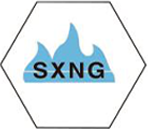
Nov . 27, 2024 19:40
Back to list
Innovative Solutions for Pressure Reduction and Enhanced Stability in Systems
Understanding Pressure Relief Valves Essential Components in Fluid Systems
In various industrial applications, managing pressure within systems is crucial for safety, efficiency, and functionality. One of the most important components used for this purpose is the pressure relief valve (PRV), specifically designed to control or limit the pressure in a system. This article aims to delve into the essential functions, types, and applications of pressure relief valves.
What is a Pressure Relief Valve?
A pressure relief valve is a safety device that automatically releases pressure from a system when it exceeds a preset level. This mechanism prevents potential hazards such as explosions, equipment damage, and personnel injuries that could arise from over-pressurization. PRVs are commonly used in numerous applications, ranging from oil and gas industries to water treatment facilities and manufacturing processes.
How Does a Pressure Relief Valve Work?
The operation of a pressure relief valve is relatively straightforward. It consists of a spring-loaded mechanism that holds a disc against a seat. When the pressure in the system exceeds the set level, the force exerted by the pressure on the disc overcomes the spring force, causing the disc to lift off the seat. This action allows excess pressure to escape, ensuring the system remains within safe operational limits.
After the pressure is relieved, the system's pressure drops back to an acceptable level, and the spring force pushes the disc back onto the seat, sealing the valve. This automatic action signifies the efficiency and reliability of pressure relief valves in maintaining system integrity.
.
There are various types of pressure relief valves, each designed for specific applications and requirements
مزلقة تخفيض الضغط

1. Spring-Loaded Valves The most common type, these valves use a spring mechanism to maintain pressure. They are simple, cost-effective, and widely used in various industries.
2. Pilot-Operated Valves These valves utilize a smaller pilot valve to control a larger valve. They provide better control and can handle higher flow rates and pressures, making them suitable for high-capacity systems.
3. Vacuum Relief Valves Essential for protecting tanks and vessels from vacuum conditions that can lead to structural damage, these valves allow air to enter the system when the internal pressure drops too low.
4. Safety Relief Valves Designed to accommodate both pressure and vacuum conditions, safety relief valves are often mandated by safety regulations in certain industries.
Applications of Pressure Relief Valves
PRVs are integral to numerous industries. In the oil and gas sector, they are used to prevent overpressure in pipelines and storage tanks. In the chemical manufacturing industry, they protect reactors and vessels from excessive pressure, which could lead to catastrophic failures. Water treatment facilities utilize PRVs to maintain safe operating conditions in pressurized systems.
Additionally, pressure relief valves are employed in consumer appliances such as water heaters and boilers. These applications highlight the versatility and importance of PRVs in everyday machinery.
Conclusion
Pressure relief valves play a vital role in ensuring the safety and reliability of various industrial and commercial systems. By effectively managing pressure levels and preventing dangerous over-pressurization, these devices protect equipment, enhance operational efficiency, and ensure the safety of personnel. As industries continue to evolve and grow, the significance of pressure relief valves will remain pivotal in safeguarding fluid systems against pressure-related hazards. Investing in quality PRVs and ensuring their proper maintenance can lead to safer and more efficient operations across various sectors.
Latest news
-
Safety Valve Spring-Loaded Design Overpressure ProtectionNewsJul.25,2025
-
Precision Voltage Regulator AC5 Accuracy Grade PerformanceNewsJul.25,2025
-
Natural Gas Pressure Regulating Skid Industrial Pipeline ApplicationsNewsJul.25,2025
-
Natural Gas Filter Stainless Steel Mesh Element DesignNewsJul.25,2025
-
Gas Pressure Regulator Valve Direct-Acting Spring-Loaded DesignNewsJul.25,2025
-
Decompression Equipment Multi-Stage Heat Exchange System DesignNewsJul.25,2025

